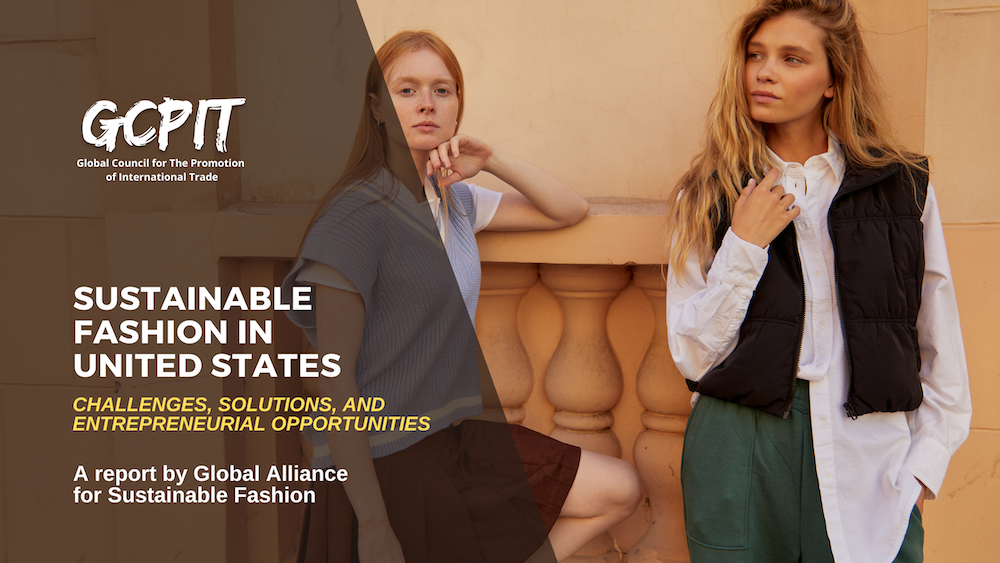Cape Town Sustainable Fashion: Eco-Friendly Trends to See
Wiki Article
Keep Ahead of the Curve by Checking Out Innovative Fashion Fads
In an industry as vibrant as style, remaining ahead involves more than just adhering to current fads-- it demands an exploration of advancement. Smart textiles, as an example, are changing garments into practical work of arts, while 3D printing is changing layout processes with its personalized, waste-reducing capabilities. As sustainability comes to be a foundation, technologies like green materials and round style techniques are improving environmental obligation - Cape Town Sustainable Fashion. Moreover, the convergence of innovation and style proclaims a new era of consumer engagement. How, then, can these arising trends redefine the future of fashion, and what implications do they hold for brands seeking to thrive in this developing landscape?
Embracing Smart Textiles
In recent times, the garment industry has actually experienced a transformative shift with the combination of clever textiles, an advanced advancement that blends modern technology with fabric. This development stands for not just a blend of visual appeals and functionality but also a considerable jump in the direction of sustainability and customization in vogue. Smart fabrics, additionally referred to as e-textiles, embed sophisticated electronics such as sensors and conductive strings within the fabric, enabling garments to communicate with the setting or the user.These fabrics are made to check physical parameters, such as heart price or body temperature level, supplying real-time health and wellness analytics. Beyond health applications, smart fabrics are likewise being used for flexible garments, which can alter color or pattern in response to ecological stimulations, therefore supplying a dynamic fashion experience.
Furthermore, the development of energy-harvesting fabrics that produce power from movement or sunlight is leading the means for self-dependent wearable technology. This innovation is appealing to eco conscious customers and designers intending to minimize the eco-friendly impact of fashion. As r & d in this field advance, smart textiles are anticipated to become progressively common, improving the landscape of contemporary fashion with their multifunctional abilities.
The Rise of 3D Printing
Reinventing the production landscape, 3D printing has actually emerged as a game-changer in the apparel industry. This cutting-edge modern technology has actually enabled designers to push the boundaries of imagination, generating elaborate and tailored garments that were formerly unthinkable. By leveraging digital layout and additive production, 3D printing helps with the production of complicated geometries and patterns, enabling designers to try out new textures and frameworks.A remarkable advantage of 3D printing in vogue is its ability to generate on-demand, lessening waste and reducing inventory needs. This effectiveness not only optimizes manufacturing processes however also permits for rapid prototyping, enabling developers to bring their visions to life in a shorter duration. Furthermore, 3D printing supports personalization to a level unmatched by typical techniques, offering customized fits and special layouts customized to specific consumer preferences.
The increase of 3D printing has likewise democratized style, making it available to arising developers that can now produce high-quality pieces without significant financial investment in conventional production infrastructure. As technology proceeds to advance, the garment industry is positioned to harness the complete possibility of 3D printing, exploring brand-new materials and techniques that will certainly redefine how fashion is conceived and produced.
Sustainable Fashion Innovations
As the fashion business grapples with click now the pushing requirement for environmental responsibility, lasting fashion innovations have actually emerged at the forefront of transformative adjustment. The growing recognition of environmental effect has fueled a change towards even more eco-conscious practices and products. Brands and designers are currently prioritizing sustainability, including techniques that reduce waste and lower carbon impacts.One considerable development is the rise of circular style, which emphasizes recycling and upcycling to expand the lifecycle of garments. This approach not only minimizes waste but likewise urges consumers to take on a more conscious approach to garments consumption. In addition, the usage of lasting products, such as organic cotton, hemp, and recycled polyester, has gotten traction. These materials need much less water and energy during production, significantly reducing environmental influence.
One more innovation depends on the adoption of innovative dyeing strategies that utilize waterless processes or natural dyes, thereby minimizing the vast amounts of water and chemicals typically used in textile dyeing. In addition, advancements in biotechnology have actually led to the production of lab-grown natural leather and fabrics, supplying environmentally pleasant and cruelty-free alternatives to conventional products. Through these pioneering initiatives, the fashion industry is making purposeful strides towards a much more lasting future.

Tech-Integrated Apparel
Tech-integrated garments represents a revolutionary blend of style and technology, reshaping exactly how people communicate with their apparel. This ingenious domain name is marked by the inclusion of wise textiles and ingrained digital elements, improving both performance and visual appeal. From fitness trackers embedded in sports apparel to heated coats managed using smart device applications, tech-integrated apparel provides consumers unmatched benefit and adaptability.Introducing brand names are driving this fad, concentrating on developing garments that react to ecological stimuli or user commands. For circumstances, some garments can transform shade or pattern in action to temperature shifts, while others incorporate biometric sensing units to check health and wellness metrics like heart rate or anxiety Full Article levels. The smooth combination of technology right into fabrics likewise extends to environmental sustainability, with efforts to develop self-cleaning fabrics or garments that change to weather problems, thus decreasing the requirement for multiple layers.
Additionally, the development of wearable modern technology is not simply restricted to garments but expands to accessories like watches and glasses, more broadening the range of tech-integrated fashion. As the market proceeds to introduce, the potential for modification and personalization in apparel expands, supplying customers special, tech-enhanced fashion experiences that cater to their specific needs and choices.
Future of Virtual Fashion
In recent years, the future of virtual fashion has actually emerged as a transformative pressure within the sector, leveraging improvements in electronic modern technology to redefine how style is developed, experienced, and eaten. By integrating augmented truth (AR), online truth (VIRTUAL REALITY), and 3D layout tools, designers can currently craft interactive and immersive experiences that go beyond conventional style limits. Virtual style enables the development of garments that exist only in digital settings, using limitless possibilities for development without the restrictions of physical production.This digital shift not only offers opportunities for innovative expression yet additionally addresses sustainability concerns integral in standard fashion techniques. Cape Town Sustainable Fashion. By removing the need for physical sources, virtual style decreases waste and lessens carbon impacts. Furthermore, the increase of digital style lines up with the raising customer need for unique and personalized experiences, as online garments can be personalized and tailored to specific choices with convenience

Conclusion
The fashion industry's future lies in the assimilation of sustainable techniques and ingenious technologies. Digital fashion is positioned to redefine consumer interactions.In recent years, the fashion market has observed a transformative shift with the combination of smart fabrics, an advanced advancement that blends innovation with material.As the fashion sector grapples with the pressing demand for why not try here ecological obligation, lasting fashion developments have actually emerged at the leading edge of transformative change.In current years, the future of virtual style has arised as a transformative force within the market, leveraging innovations in digital technology to redefine just how style is produced, experienced, and taken in. The rise of digital fashion lines up with the raising customer demand for special and individualized experiences, as online garments can be personalized and tailored to private choices with convenience.
The style market's future lies in the combination of innovative technologies and lasting techniques.
Report this wiki page